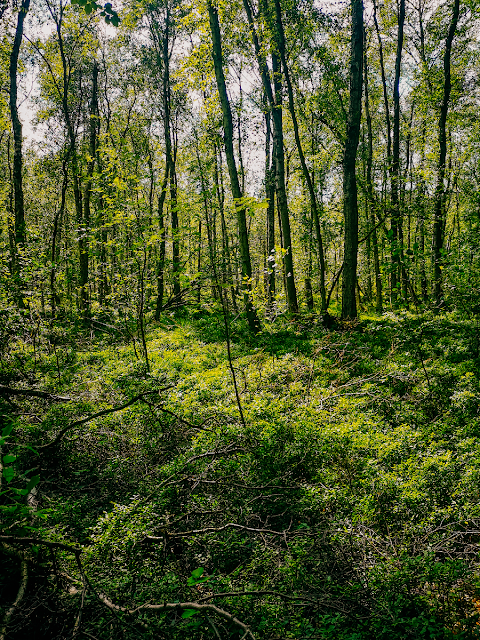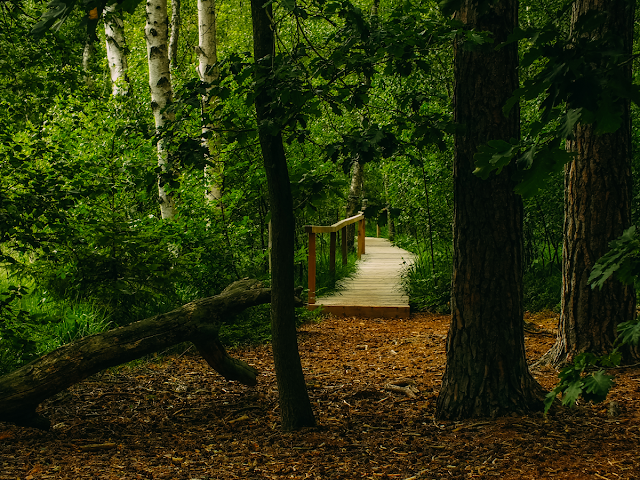the 'scheune bollewick'.
before we headed to one of the many entrances to the national park müritz in waren, we stopped shortly at this huge barn built out of fieldstones. the barn in bollewick is germany's biggest fieldstone barn, it measures 125 meters in length and 34 meters in width and has a capacity of 10.000 square meters. it was built in 1880 by the baron adolph theodor wilhelm von langermann zu erlenkamp und spitzkuhn ( what a name! ) and served as an agricultural barn until 1991, after the fall of the wall it was turned into a mall & hotel with joined restaurant and cafe. there are plenty of local specialty shops and ateliers inside this remarkable building, showcasing the work and livelihood from around the region. we only stopped here to shop and look for little trinkets and souvenirs, so our stay was relatively brief. i found the building to be most impressive from the outside, it's not often you can see such a big barn in this particular style in germany. this is also a big hub for events and markets, so it definitely is hard to ignore this place when you are in the region.
the hotel is situated in this part of the barn. i love the ivy-covered walls and how it continously crept up further.
the early morning had started out very rainy and drizzly, so i remember we didn't do a lot until it was afternoon. the weather forecast told us that the rain would recede eventually so we decided to head to waren/müritz to have a walk along the eastern shore of lake müritz, the biggest lake in mecklenburg-vorpommern. that part is actually part of the national park müritz, which is germany's biggest terrestial nature park ( 322 square kilometer in size ). lake müritz itself is not entirely part of the park, which can be a little confusing as the whole thing was named after it. the park extends to neustrelitz & serrahn in the east and comprises around 100 lakes of all sizes within its park borders. along with moors and meadows and a few patches of primal beech forests it is home to many diverse flora and fauna, in which you can find a lot of protected animal and plant species. we only got to explore a very small section of the park, very close nearby the city of waren. the trail we chose was marked with a red squirrel and led us to a look-out onto the lake and then towards the wienpietschseen, a little assortment of lakes that are part of a cauldron fen inside the park. i think it was about a 10 kilometer walk. eventually, the sun would make an appearance, which made the hike even more enjoyable.
a very dark sky greeted us when we arrived, pouring rain. it was very moody.
it was still dripping a bit as we entered the national park.
into the green! it was surprising to me how lush everything was and how densely forested. i think we have forgotten what true wilderness means, when there is close to no human interference in natural landscapes. in the national park you have to stay on the pathways always, as to not disturb the nature. i loved seeing all these beautiful sceneries that are allowed to grow and expand on their own, it felt a lot more magical than a controlled forest.
with the cloudy skies above us, everything was tinted in a deep dark green.
long grasses were growing on the forest floor, swaying slightly in the wind. it is so rare to see green forest floors!
overpasses were leading passengers and walkers over the boggy forest floors. these particular floors are floating vegetation mats ( that's what they're called ) and it means that they are basically swimming on top of the moors. sometimes you can walk on them if the moor is silted up enough, but it's not easy to spot so the danger is always that it might not be hard enough to step onto it. that's why the overpasses were created, to let visitors pass over these floors safely. you don't want to end up as a bog body, do you?
nearing the eastern shores of lake müritz also means wet underground, as they are constantly flooded.
we arrived at the 'schnakenburg', a little lookout that let's you have a view over the reed beds onto the lake. a 'schnake' is a crane fly, which is a very common insect in germany. many confuse them with mosquitos, but they don't have the biting in common. they are usually rather docile and just float around everywhere, drinking nectar. but don't think that the mecklenburg lakelands are without gnats either, no, you have to definitely deal with them little fuckers when you visit the lakelands in the summer! prepare to bring insect repellent for sure!
the view over the reed beds onto the lake! it was beautiful and peaceful!
back through the woods again! couldn't get enough of the grass-covered grounds!
you would also come across pine tree woods every once in a while...
... and alder forests as well! alders love to grow close to wetlands and border areas of heavier woods, they are pioneer trees that prepare the grounds for the following vegetation.
these grounds were covered in bilberry shrubs! i am sure we sneakily foraged some ;)

those small pathways were so nice, i like trails like this a lot! always feels like you are in a fairytale and follow a little white rabbit ;)
it's remarkable what a difference it makes when the light changes in the woods. from a gloomy atmosphere at the beginning of our walk to a jolly and cheerful forest by the end of it.
looking up revealed a beautiful birch tree forest sometimes. i liked how different the forest could be, it rarely looked the same a few hundred meters on. i guess that's also a benefit of a nature park, it is allowed to be diverse, depending on its local environments. if it is a more moor-ish environment, you'll find birch marshland forests, if it's more like a sandy underground, pine trees and oak trees can be more prevalent. but it's always best when a wide variety of trees are in a forest, that's the most healthy forest anyway!

we reached the wienpietschseen, which are leftover lakes from a subglacial channel. the water in that channel, over time, silted up and formed the moor surrounding these two lakes. eventually, in a far future, the lakes will cease to exist as well, unless they get flooded ( might happen when lake müritz goes over its shores due to floods ). it is a long process, so you will probably not be a witness to its siltation ;)
these lakes were so tranquil and idyllic 💚
tiny window through the birch trees.
taking photos of each other taking photos ;)
this is the bigger one of the two lakes, which is about 200 meters long and 85 meters wide. feeling and seeing the sun on our skins after that dark gloomy morning was such a bliss.
it was so nice to walk over the boggy area surrounding the lakes, and experience the moor without having to fear sinking in. i once lost a shoe accidentally stepping into a moor pit in the thuringian mountains and that was kinda freaky. i remember it eating the shoe with a big slurp and my foot was sinking in deeper as well. as i pulled it out, i had to do it with quite some force. it was so weird how hungry the bog felt and how my foot almost felt cemented in. don't recommend!
smooth lake reflections and water lilies! could almost be a monet painting ;)
is it weird that this image has pretty soothing effect on me? i kind of want to print it as a wall image and hang it.
a wood creature crawling into the moor.
i like when the waters are so still that the sky and the surroundings are being reflected perfectly!
it's like you are looking upside down, having to remind yourself where above and below actually is.
water lily leaves almost perfectly merging with the waters. oh, and those reflections are so dreamy. i love these images 💙
layers of earth, water and the sky.
moor grasses emerging from the soil, as we ventured our way back to the starting point.
these fruit belong to the alder buckthorn, a shrub that grows often in moor landscapes. it's a poisonous plant, though the bark of it is used in today's medicine as a laxative. the berries will be black in its last stage when birds will snatch them. the wood itself is often used as firewood, it's supposed to leave very little ash recess. in german, this tree is called 'faulbaum' - rot tree - because the bark smell very rotten.
i didn't smell anything rotten, but i guess it's hard to discern when you are in a moor area. everything smells a little boggy.
another overpass, one of the very last ones before we left the woods.
goodbye, pretty wienpietschseen, glad to have gotten to explore you 💚
this owl is the national park owl and kindly tells you to watch your step and tread lightly in these protected magical landscapes!
some last images of lake müritz with a little more sunshine than earlier in the day!
when i will return to the region, i want to definitely check out more of the national park, there is still so much to discover and explore. the park is huge and has many entry points in other towns and villages, so definitely you won't get bored with it! and how could you, if there are so many seasons to go through and see the park with new eyes constantly!















































Comments